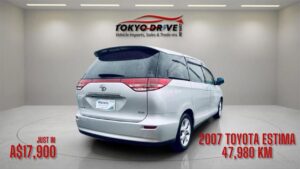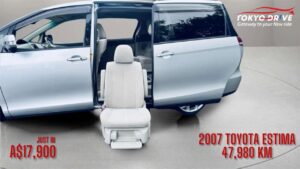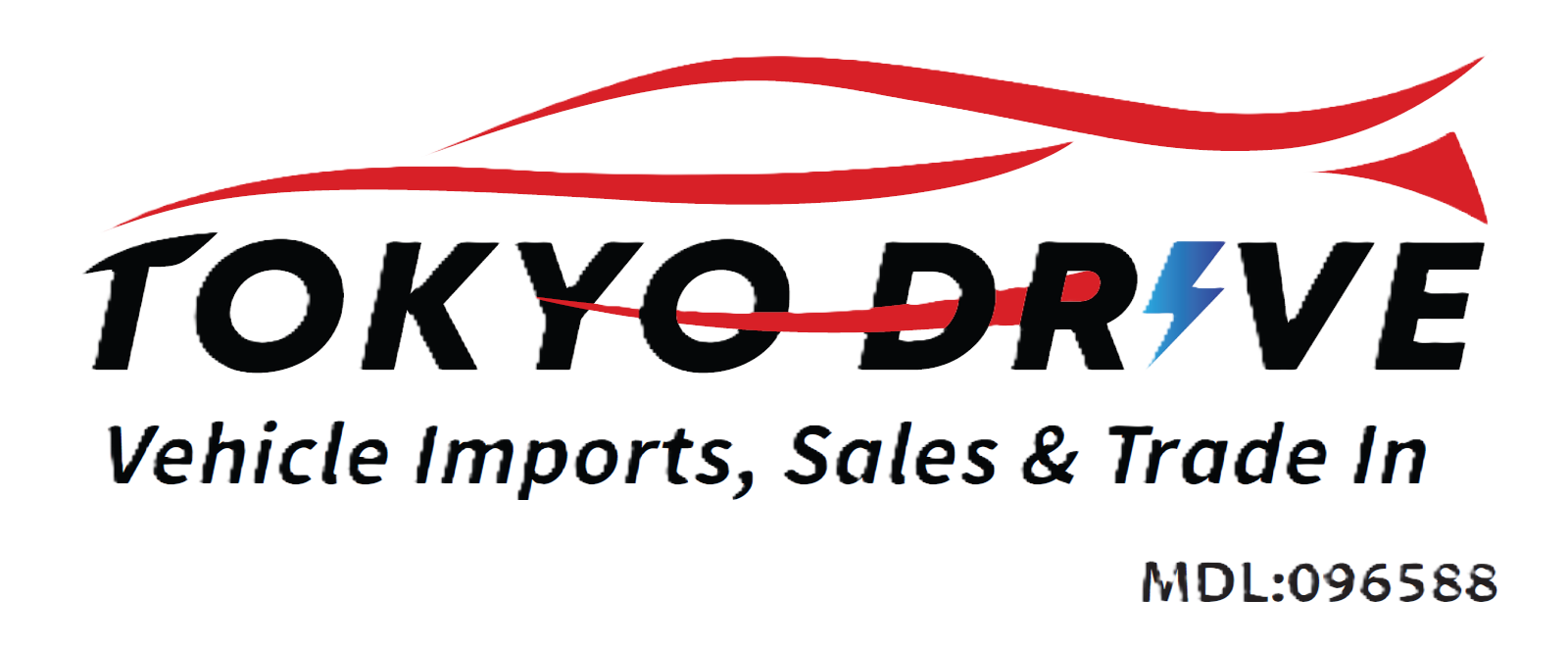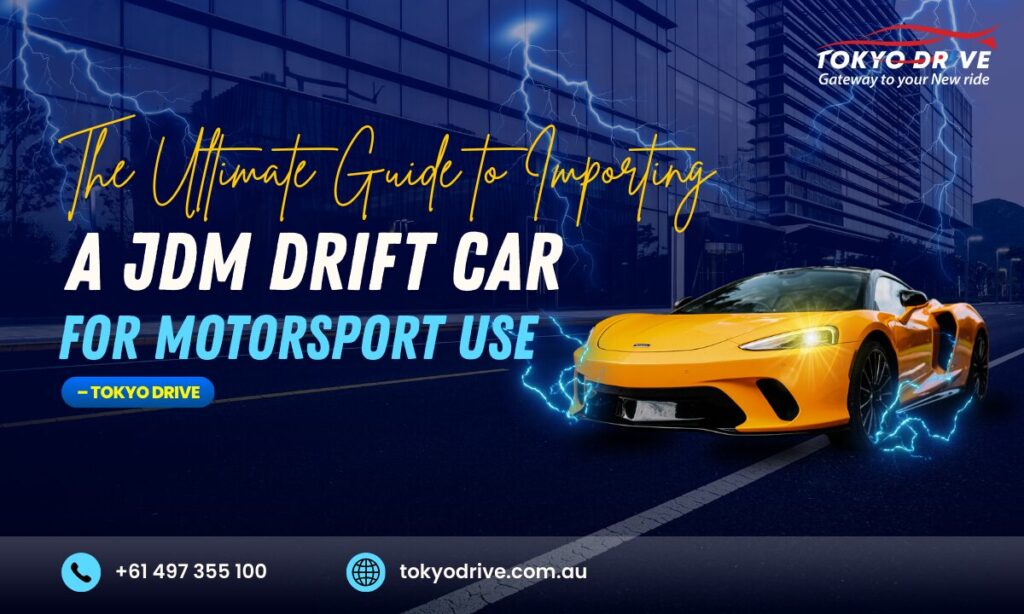When it comes to motorsport excitement, few things capture the thrill like sliding into a perfect drift. If you’ve ever dreamed of owning a Japanese Domestic Market (JDM) drift car, you’re not alone. In Australia and beyond, the demand for JDM vehicles has skyrocketed, thanks to their unique mix of performance, style, and affordability. At Tokyo Drive, we’ve seen countless enthusiasts make their dream a reality, importing drift-ready machines that are designed for motorsport use. This guide will walk you through everything you need to know about importing a JDM drift car – from choosing the right model to navigating regulations and ensuring long-term success on the track.
Why Choose a JDM Drift Car?
JDM cars have long been associated with motorsport, particularly drifting. Known for their balance, lightweight chassis, and tuner-friendly engineering, these vehicles are the backbone of drift culture. Cars like the Nissan Silvia, Toyota Chaser, and Mazda RX-7 are legendary for their ability to slide with precision while still maintaining control. For P-plate drivers or advanced motorsport enthusiasts, owning a JDM drift car is a gateway to experiencing pure driving excitement.
Beyond performance, JDM imports often come at a more affordable price compared to their European or American counterparts. Combine this with easy access to aftermarket parts and modifications, and you’ll quickly see why importing one is such an attractive option.
Step 1: Research the Best Models
Before you start the importing process, you need to decide on the right car. Popular drift cars from Japan include:
- Nissan Silvia (S13, S14, S15) – Lightweight, rear-wheel drive, and extremely tuner-friendly.
- Toyota Chaser JZX100 – A bigger sedan with serious power potential and drifting credibility.
- Mazda RX-7 (FD3S) – Rotary-powered, sleek design, and iconic handling.
- Nissan Skyline R32/R33/R34 – A mix of performance and street style with massive community support.
- Toyota Supra (JZA80) – Powerful, iconic, and highly sought after.
Each car has its strengths, so think about your budget, your motorsport goals, and how much maintenance you’re willing to commit to. Tokyo Drive often helps clients narrow down choices based on driving style and experience level.
Step 2: Understand Import Regulations
Importing a drift car from Japan to Australia isn’t as simple as buying online. There are specific government rules under the Specialist and Enthusiast Vehicle Scheme (SEVS). Cars need to meet eligibility requirements, and paperwork has to be completed with care. You’ll also need to ensure compliance with safety and emissions standards before the vehicle can be legally driven or used in motorsport events.
Tokyo Drive simplifies this process by handling the paperwork, shipping, and compliance checks, ensuring that you avoid costly mistakes.
Step 3: Secure a Trusted Exporter in Japan
Finding the right exporter is critical. Japan has many vehicle auctions where drift cars are listed. Working with a reliable partner ensures you don’t get stuck with hidden issues, accident damage, or fake documentation. Always look for auction sheets, maintenance history, and mileage verification.
With Tokyo Drive’s network in Japan, we connect clients with verified exporters who specialize in JDM drift cars for motorsport use. This means peace of mind and higher confidence in your investment.
Step 4: Calculate the Costs
Importing a JDM car involves more than just the purchase price. Consider:
- Auction or purchase price in Japan.
- Shipping costs and insurance.
- Import duties and taxes.
- Compliance modifications (if required).
- Registration and inspection fees.
- Motorsport preparation (roll cages, suspension upgrades, tires, etc.).
While the upfront cost may seem high, many drivers find the long-term value of a JDM drift car unmatched. Affordable parts, durability, and resale value make it a smart investment for motorsport.
Step 5: Prepare for Motorsport Use
Once your drift car arrives, it’s time to prepare it for the track. This often involves:
- Upgrading the suspension for better handling.
- Installing a roll cage for safety.
- Fitting high-performance tires.
- Tuning the engine for reliability and power.
- Adding aftermarket parts like limited-slip differentials.
Drifting is demanding, so investing in quality parts ensures performance and safety. At Tokyo Drive, we guide drivers on the best upgrades to get the most out of their drift machines.

Step 6: Join the Drift Community
Owning a JDM drift car is about more than the machine itself – it’s about joining a passionate community. Australia has a growing motorsport and drift culture, with clubs, track days, and competitions happening year-round. Participating not only improves your driving skills but also builds connections with like-minded enthusiasts.
Tokyo Drive regularly engages with this community, helping new owners find events and connect with experienced drifters.
Final Thoughts
Importing a JDM drift car for motorsport use might sound intimidating, but with the right guidance, it’s an achievable and rewarding journey. From researching models to navigating regulations and preparing your car for the track, every step brings you closer to experiencing the adrenaline of drifting. Tokyo Drive is here to make the process smooth, reliable, and exciting.

If you’re ready to turn your motorsport dream into reality, a JDM drift car is the perfect choice. With style, performance, and a touch of Japanese engineering magic, your next drift experience awaits.



